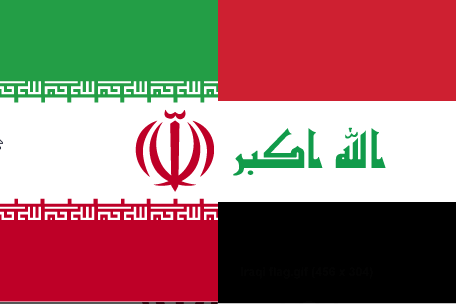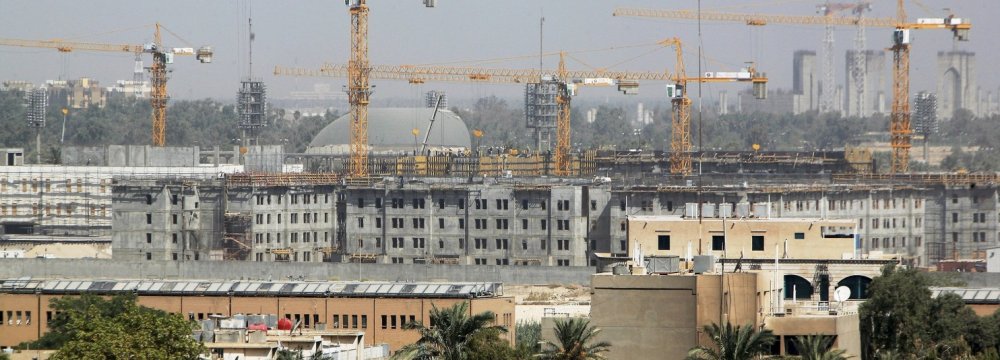
Iranian Steelmakers Missing Out on Lucrative Iraqi Market

 Latest statistics show Iraq was Islamic Republic’s sixth steel export destination during the eight months to November 20 with 251,000 tons worth $151.6 million.
Latest statistics show Iraq was Islamic Republic’s sixth steel export destination during the eight months to November 20 with 251,000 tons worth $151.6 million.
Iraq has been rebuilding its infrastructure ever since the United States’ 2003 invasion.
Years on, the neighboring country is still looking for investments in transportation, energy, health, construction, agriculture and education. Lacking the proper industrial infrastructure to engage in any form of production, it also needs primary materials such as cement and steel.
Such a large market obviously has not slipped under the radar of the world’s top steel exporters. For instance, China has exported over $20 billion worth of steel products to the country ever since the reconstruction process began, the Persian daily Donya-e-Eqtesad quoted Iranian Ghadir Iron and Steel Company’s Managing Director Asadollah Farshad as saying.
Russia, Ukraine and Turkey are the other main players involved in Iraq’s steel sector. Turkey has signed a $700 million deal with Baghdad to rebuild some of its war-wrecked steel mills. Jordan is also set to build a 1.25 million-ton crude steelmaking plant in Sulaymaniyah in Iraqi Kurdistan.
According to statistics released by World Steel Association, Iraq’s steel imports have surged from 355,000 tons per year to 2.8 million tons over the past 10 years.
Per capita steel consumption has risen from 32 to 93 kilograms during the same period. Experts forecast that Iraq’s demand and consumption are set to grow even further, alongside the rising demand in the Middle East.
Considering Tehran and Baghdad’s friendly political and trade ties, and thousands of kilometers of shared borders, as well as Iran’s abundant steel production, one would expect Iraq to be Iran’s main steel export destination.
Latest statistics, however, show Iraq was Islamic Republic’s sixth steel export destination during the eight months to November 20 with 251,000 tons worth $151.6 million. It followed Thailand, the UAE, Italy, Taiwan and Oman respectively.
Farshad believes that three factors have kept Iranian steel from dominating the Iraqi market. First, Iran’s lack of a cohesive export plan: The government would suddenly put the brakes on any export deals if it feels any shortage in the domestic market. Consequently, steel exporters are unable to make long-term plans for securing an export destination and might have to stop their business at any time.
The second factor is that Iranian steel prices are not capable of competing with Chinese, Russian, Turkish and Arab offerings in the Iraqi market. Iranian steel’s ex-factory price might in fact be more than competitive, while high transportation costs to Iraq and beyond dampen the competitive edge.
And the third is Iraq’s dangerous and unstable business environment. According to Farshad, many Iranian investors have tried to solve the steel price issue by trying to set up shop inside Iraq, but the Iraqi government has failed to guarantee their safety.
Farshad noted that a number of Iranian workers and specialists have lost their lives in Iraq and many Iranian investors were never paid by the government.
The industry player believes that the Iraqi steel market, despite all its untapped potential, is still too risky an environment to operate in.
The optimal way forward for the time, he said, is selling steel products solely in cash at the border until market dynamics become more predictable.
Perhaps Iranian steelmakers just have to take more risks, says managing director of Pishtaz Rah-o-Shahr Company, Mohammad Siavoshi.
In fact, what has made Turkey, China and Ukraine successful in the Iraqi market is their constant presence in the country by setting up various sales offices and warehouses. They also manage to forecast the market’s demands or take orders in advance, and sell their products on three- to six-month credits.
Siavoshi noted that more than 70% of Iraq’s steel imports constitute long products and less than 20% and 10% consist of pipes and flat steel.
This is a significant opportunity for Iranian mills, considering the excess production and low domestic demand for long products due to the slump in the domestic construction sector.


Trump weighs using $2 billion in CHIPS Act funding for critical minerals

Codelco cuts 2025 copper forecast after El Teniente mine collapse

Electra converts debt, launches $30M raise to jumpstart stalled cobalt refinery

Barrick’s Reko Diq in line for $410M ADB backing

Abcourt readies Sleeping Giant mill to pour first gold since 2014

Nevada army depot to serve as base for first US strategic minerals stockpile

SQM boosts lithium supply plans as prices flick higher

Viridis unveils 200Mt initial reserve for Brazil rare earth project

Tailings could meet much of US critical mineral demand – study

Kyrgyzstan kicks off underground gold mining at Kumtor

Kyrgyzstan kicks off underground gold mining at Kumtor

KoBold Metals granted lithium exploration rights in Congo

Freeport Indonesia to wrap up Gresik plant repairs by early September

Energy Fuels soars on Vulcan Elements partnership

Northern Dynasty sticks to proposal in battle to lift Pebble mine veto

Giustra-backed mining firm teams up with informal miners in Colombia

Critical Metals signs agreement to supply rare earth to US government-funded facility

China extends rare earth controls to imported material

Galan Lithium proceeds with $13M financing for Argentina project

Kyrgyzstan kicks off underground gold mining at Kumtor

Freeport Indonesia to wrap up Gresik plant repairs by early September

Energy Fuels soars on Vulcan Elements partnership

Northern Dynasty sticks to proposal in battle to lift Pebble mine veto

Giustra-backed mining firm teams up with informal miners in Colombia

Critical Metals signs agreement to supply rare earth to US government-funded facility

China extends rare earth controls to imported material

Galan Lithium proceeds with $13M financing for Argentina project

Silver price touches $39 as market weighs rate cut outlook

















